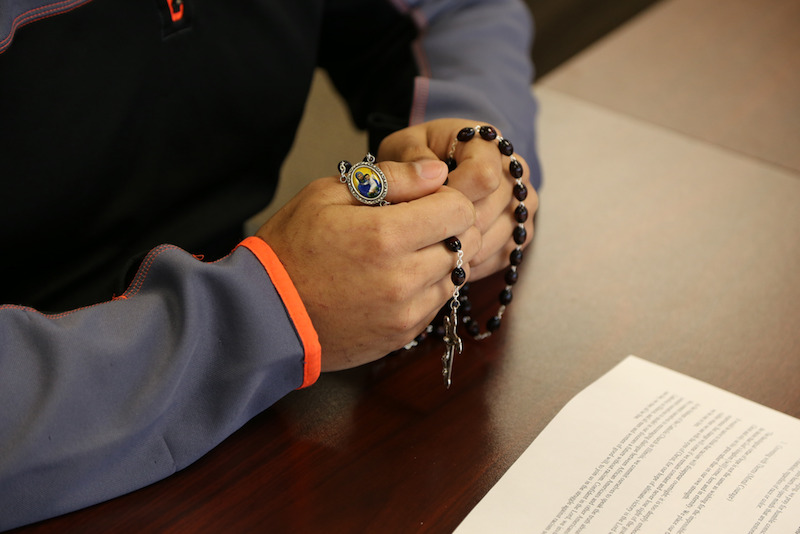The West Coast is on fire, the South is drowning in flood waters and the death toll from the pandemic continues to climb. If that’s not enough to bring us to our knees then I’m not sure what will. As Catholics we have a long history of turning to Mary in times of trouble, especially during the month of October when all are invited to renew our commitment to Mary by praying the rosary.
Praying with beads can be traced to early monasticism when monks who were illiterate and unable to pray the psalter used a garland of beads to pray 150 “Pater Nosters.” Over time, adaptations were made, including the “Ave Maria,” which was prayed 10 times followed by the Our Father.
Although popular tradition attributes the practice of praying the rosary in its present form to St. Dominic, discussion about the validity of the claim continues to be disputed. Nevertheless, we know for certain that St. Dominic was a tireless proponent of the rosary, crediting it with the conversion of the Albigensian heresy.
Legend posits that the Blessed Mother appeared to St. Dominic and taught him to recite the rosary with the Doxology preceding each Our Father. At the time she promised that all who faithfully recite the rosary would receive many graces, share in the light of God during their life and receive a plenitude of graces at the moment of death.
While St. Dominic was alive, fervor toward the rosary remained strong, but over the years, it was forgotten and the flow of grace that accompanied it was diminished. A century later, following the Black Plague and the schism of 1376 that resulted in the movement of the papacy to Avignon, renowned Dominican theologian Alan de la Roche was reproached by the Lord. During the consecration of the Mass at which he was presiding, he heard Jesus address him from the host saying:
“You are crucifying me again now because you have all the learning and understanding that you need to preach my Mother’s rosary, and you are not doing so. If you only did this, you could teach many souls the right path and lead them away from sin — but you are not doing it and so you yourself are guilty of the sins they commit.”
Following the Lord’s rebuke, Blessed Alan de la Roche resolved to preach the rosary and was rewarded with an apparition by Our Lady. She told him that she had saved him from the great sins of his youth so that he could preach the rosary far and wide.
On Oct. 7, 1571, a Turkish fleet, engaged in battle with the navy of Christian Europe, was defeated while confraternities of the rosary to be made on that day, beginning in 1572, which he titled Our Lady of Victory.
Two years later, Pope Gregory XIII designated the date specifically as the Feast of the Holy Rosary. On August 5, 1716, a second victory over the Turks occurred in Hungary, to which Pope Clement XI responded by extending the Feast of the Holy Rosary to the entire Church.
Since then, numerous popes have dedicated encyclicals to Mary in support of the rosary. St. John Paul II called the rosary a “compendium of the Gospel” and in 2002 added the Luminous Mysteries to the mysteries of the rosary. In total, the mysteries encapsulate the life of Christ, establishing the rosary as a dynamic teacher of Christian faith and virtue while combining vocal and mental prayer.
Through the centuries, the rosary has been extolled by countless saints as a powerful intercessory tool and a gateway to a deeper appreciation for the mysteries of faith, infusing all who pray it devoutly with a deeper love for God.
Those who erroneously believe that Vatican II lessened devotion to Mary need only reflect on the council’s documents, ensuring devotion and esteem of Mary “who occupies a place in the Church which is the highest after Christ and also closest to us” (“Lumen Gentium,” 8, 54).
It can be said that the rosary transcends time and space, reminding us that mystery dwells among us. Praying the rosary leads us to the divine meeting tent, pitched on a mountaintop within the human heart, waiting to set souls aflame and set the world aright.
At a time when the world is afflicted by so many crises, we stand in need of heavenly intervention more than ever, and who better to intercede for us than the woman who brought the Savior into the world?

